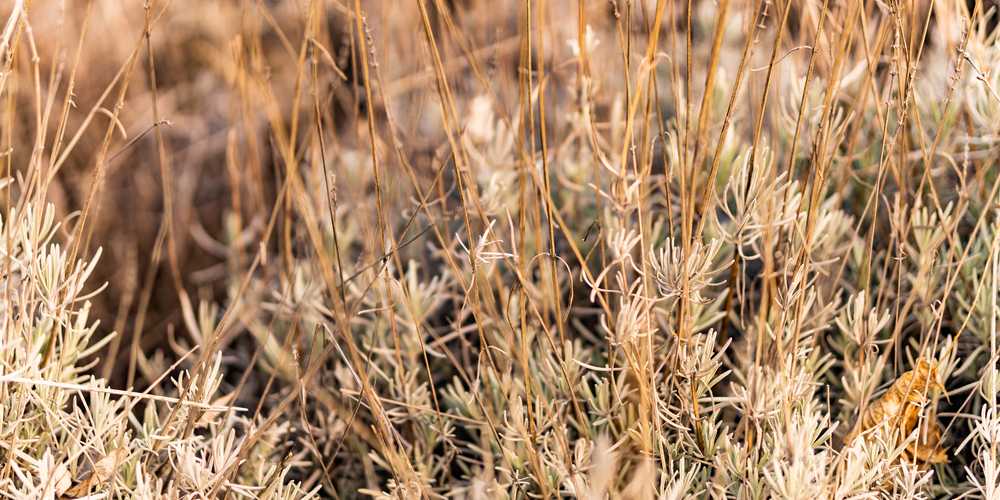Lavender is an excellent herb to add to any garden, especially if you live in USDA hardiness zones between 5 and 9. It is a colorful plant that, during the flowering season, will attract plenty of beneficial pollinators to your garden.
While that might be a reason good enough to add the plant to your garden, it isn’t the only one. For instance, its soothing scent will also make it more pleasant to spend time outdoors.
Despite not being a particularly challenging plant to grow, knowing how to recreate the ideal conditions for its growth in your garden will make a considerable difference.
However, sometimes things might not go as you expect. For instance, your lavender might turn brown. But what causes such a condition, and what can you do about it? Don’t worry: you are in the right place to learn all about it!
Lavender Turning Brown: All You Need to Know
Everything seemed to go well with your lavender until it suddenly turned brow. If this ever happened to you, you know how it feels. No one likes seeing all of the time and effort spent growing plants go to waste. So, if you ever asked yourself: “why is my lavender turning brown?” here is what to need to know about the condition.
The truth is that more often than not, lavender turns brown because of a fungal disease. Don’t forget that lavender is not a heavy feeder. Too much moisture or humidity might cause root rotting, a condition that lavender tends to suffer frequently.
For this reason, learning how much and how often to water your lavender is crucial. Keep in mind that the most common cause of problems with lavender is a consequence of overwatering. So, it is always best to give it too little (rather than too much) water.
Planting your herb in a compact substrate that drains slowly might increase the chances of this being a problem for you. Additionally, if you live in a humid region, you might have to protect your plant from excessive moisture. Jump to the following section to learn more about preventing such a condition.
How to Prevent Your Lavender From Turning Brown
As you might expect, the first step toward limiting the chances of your lavender turning brown involves working on your watering schedule. Only water your lavender if the soil feels dry. While it is best to water your herbs thoroughly, you should not do it too frequently.
Also, don’t forget that lavender thrives in well-draining soil. If necessary, consider amending your substrate to improve drainage and water retention. Add some sand: after all, lavender is native to the Mediterranean, in regions with sandy or stony soils. Don’t limit yourself with this: more sand will be better than too little.
Additionally, avoid overwatering your plant. Do not water your lavender more than once every two weeks. Don’t forget to protect it from heavy rainfall and prefer unfrequent deep watering over frequent but scarce. Also, remember to reduce the watering frequency over the winter (when these plants go dormant).
If you didn’t expect this already, lavenders have a low tolerance to humidity. So, if you are planting more than one plant, consider spacing them at least three feet apart to ensure adequate airflow.
Failure to do so might result in a micro-climate more humid than the surrounding area. And such a condition would be ideal for the proliferation of fungi and bacteria, causing your plant to turn brown.
What to Do About Your Brown Lavender
Our best recommendation to deal with your brown lavender is to dig it out and plant it in dry soil. Select a substrate with the ideal characteristics to grow this herb. If you decide to keep your plant in a pot, don’t forget that plants in containers might be more demanding.
So, choose a container with drainage holes that are big enough to accommodate your plant. Let your herb dry before adding any extra moisture. Additionally, don’t forget to protect it from rainfall. Consider moving your pots indoors if the forecasts expect heavy rain.
It is worth remembering that brown lavenders might not always recover from root rot and other fungal diseases. Still, moving it to a new location with a suitable substrate will be the best thing you can do.
Why is lavender plant turning brown: Conclusion
If your lavender turned brown after heavy rainfall, consider adding sand or gravel to the soil. Doing so will increase drainage and might help your plant recover faster.
Related Article: Can Lavender Grow in Clay Soil?

